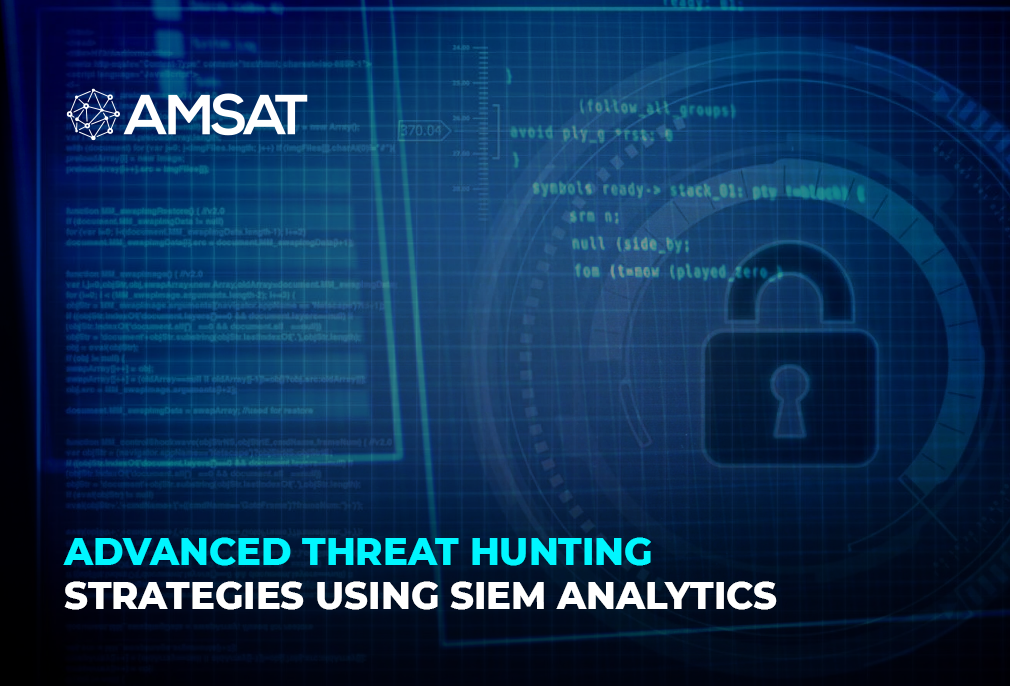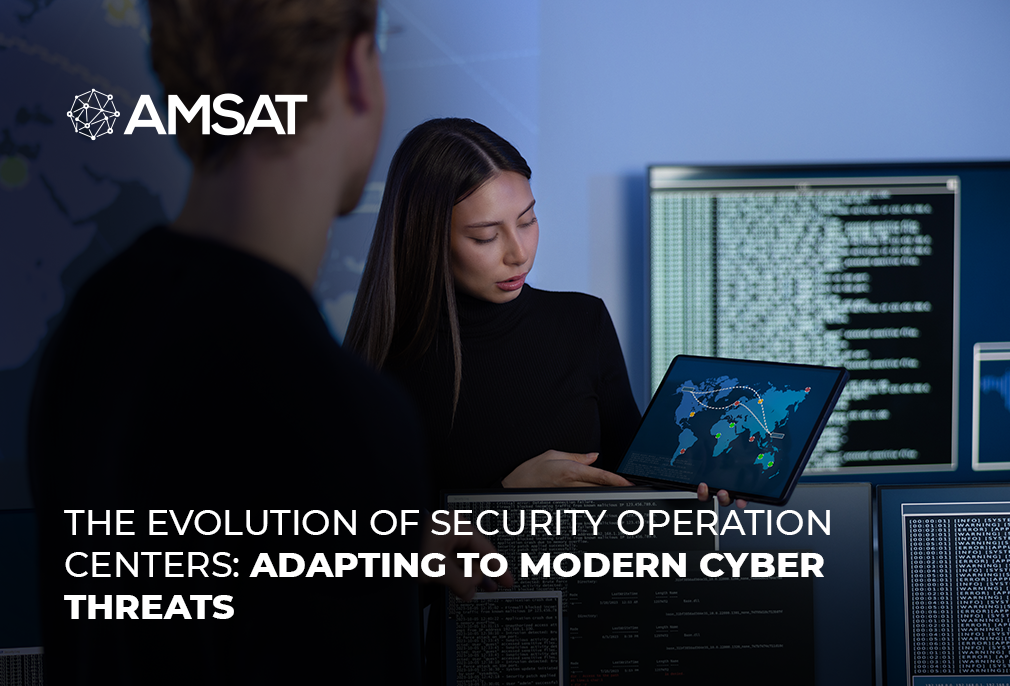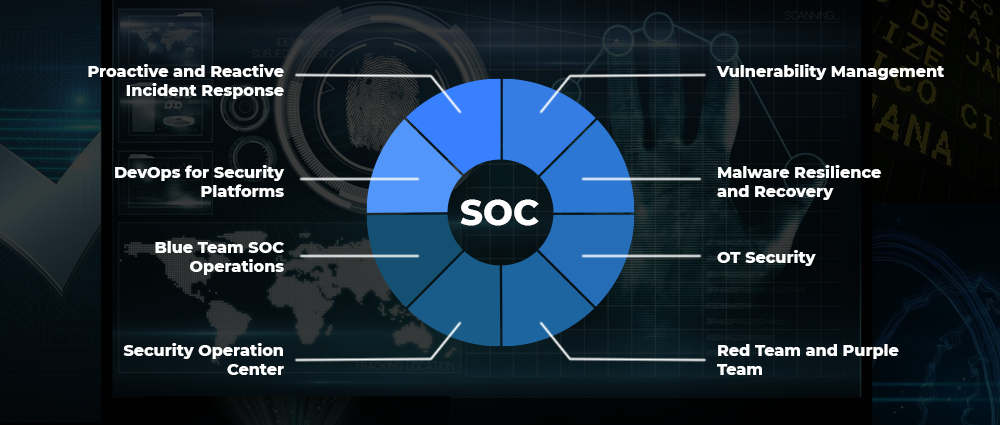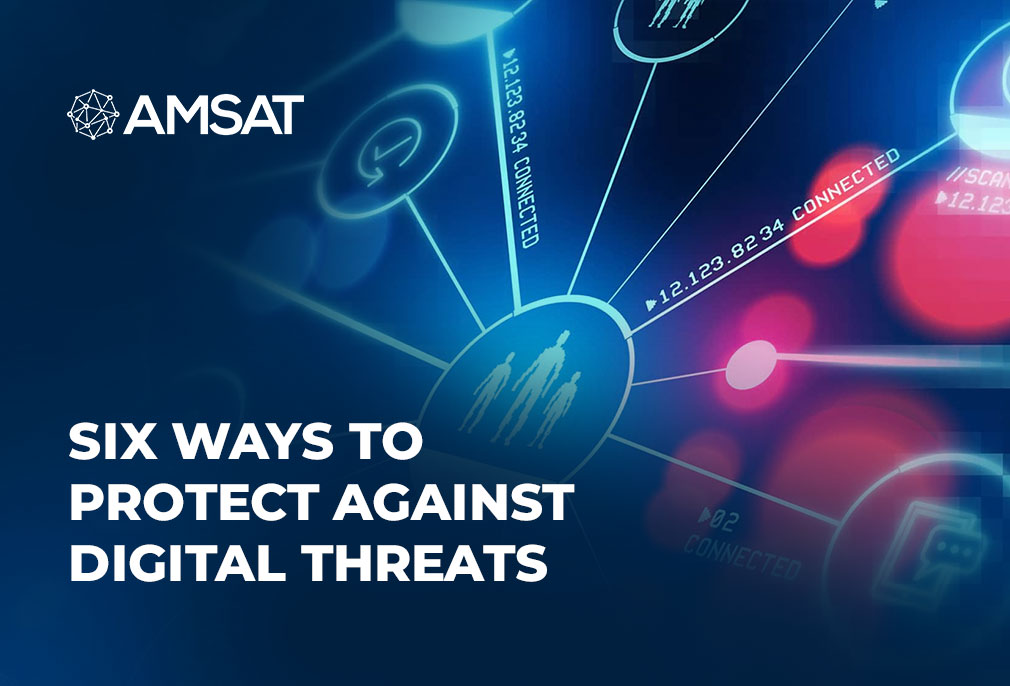Latest Blogs

By AMSAT Jan 26, 2024
Analyzing the Top 3 Emerging Cyber Threats and How to Prepare for the Future
Cyber threat management is a challenge that businesses worldwide are grappling with, especially in the face of the exponential rise in cyber threats. 2023 was a year of continued evolution in the cybersecurity landscape.
According to a survey by The State of Supply Chain Defense Annual Global Insights Reports 2023, the mean number of supply chain breaches experienced 4.16 incidents in 2023, up from 0.89 in 2022. While familiar threats like ransomware persisted, ingenious attackers developed new tactics and exploited emerging technologies, giving security professionals sleepless nights.

According to a report published by the Homeland Security Department’s Cyber Safety Review Board, it’s high time organizations acted to secure themselves, with the Board underlining tangible ways to do so, supported by the U.S. government and the companies best prepared to provide foolproof solutions to elevate the whole ecosystem. As we ring in 2024, it’s crucial to reflect on the past year’s most concerning trends and prepare for the cyber threats that lie ahead.
Top 3 Emerging Cyber Threats of 2023:
1. Supply Chain Attacks:
Traditional attack methods often target the end user directly. However, 2023 saw a surge in supply chain attacks, where attackers compromise a vendor or supplier to infiltrate their customers’ systems. These attacks leverage the inherent trust businesses place in their partners, making them particularly difficult to detect and prevent.
One notable example is the SolarWinds supply chain attack, which affected thousands of organizations worldwide. Hackers infiltrated the software company’s update servers, injecting malicious code into legitimate software updates. This allowed them to gain access to the systems of SolarWinds’ customers, including government agencies and Fortune 500 companies.

2. Deepfakes and Synthetic Media:
The rise of deepfakes and synthetic media presents a major challenge for cybersecurity. These technologies allow threat actors to create highly realistic audio and video fakes, making it increasingly difficult to separate truth from fiction.
Deepfakes can be used for various malicious purposes, such as:
- Social engineering: Attackers can impersonate executives or employees to gain access to sensitive information or trick victims into transferring money.
- Disinformation campaigns: Spreading fake news and propaganda can sow discord and manipulate public opinion.
- Financial fraud: Deepfakes can be used to create fake identities or impersonate victims to commit fraud.
3. Internet of Things (IoT) Vulnerabilities:
The growing number of IoT devices connected to the internet presents a vast attack surface for cybercriminals. These devices often have weak security measures and are poorly patched, making them easy targets for exploitation. There are over 12 billion connected IoT devices worldwide, and 70% of them have at least one critical vulnerability, according to a study by MDPI.
Once compromised, IoT devices can be used to launch several attacks, including:
- DDoS attacks: Botnets of compromised devices can be used to overwhelm websites and online services with traffic, making them unavailable to legitimate users.
- Data breaches: Attackers can steal sensitive information stored on IoT devices, such as personal data or home security footage.
- Botnet attacks: Compromised devices can be used to launch attacks against other targets, such as critical infrastructure.
Trends in Cybersecurity:
- Increased Focus on Cyber Threat Intelligence: Organizations are increasingly investing in cyber threat intelligence (CTI) to gain insights into attacker tactics, techniques, and procedures (TTPs). This information helps them proactively identify and mitigate threats before they can cause damage.
- Shift to Zero Trust Security: The traditional perimeter-based security model is no longer sufficient in today’s complex IT environments. Organizations are adopting zero trust security principles, which assume that no user or device should be trusted by default and access should be granted based on the least privilege principle.
- Rise of Security Automation: With the volume and sophistication of cyberattacks increasing, security automation is becoming essential. Automated tools can help detect and respond to threats faster and more effectively.
How to Prepare for Future Cyber Threats:
- Conduct Regular Security Assessments: Regularly assess your organization’s security posture to identify and address vulnerabilities.
- Implement a Layered Security Approach: Employ a layered security approach that includes endpoint protection, network security, and data security solutions.
- Train Employees on Cybersecurity Awareness: Train your employees on cybersecurity best practices to identify and avoid phishing attacks and other social engineering tactics.
- Have a Cyber Incident Response Plan: Develop and test a cyber incident response plan to outline how you will respond to a security breach.
- Stay Up-to-Date on the Latest Threats: Keep yourself informed about the latest cyber threats and trends by subscribing to security advisories and attending industry events.
List of Companies Affected by Ransomware in 2023:
- Colonial Pipeline: The largest fuel pipeline operator in the United States was forced to shut down operations after a ransomware attack, leading to widespread fuel shortages and price increases.
- Costa Rica: The Costa Rican government declared a national emergency after a series of coordinated ransomware attacks crippled critical infrastructure.
- CNA Financial Corporation: The eighth-largest insurance company in the United States
Conclusion
In today’s ever-evolving threat landscape, businesses are confronted with a plethora of challenges from threat actors that have simply outwitted them in terms of their approach and modus operandi to carry out sophisticated attacks.
Given the complexity and frequency of cyberattacks that have kept businesses on their toes, it would be prudent for entrepreneurs to beef up cybersecurity measures and collaboration among stakeholders, while ensuring consistent ingenuity to stay ahead of potentially devastating threats.
AMSAT, a well-known cybersecurity company, offers a range of services to safeguard your organization from looming cyber threats that could cause it irreparable damage. So, call now or schedule a free demo to see what wonders the company can do to ensure the security of your organization and your employees.
TAGS
- Cyber Threats
- Digital Threats
- Cyber Security
Recent Blogs
Ready to Get Started?
Our specialists are ready to tailor our security service solutions to fit the needs of your organization.















